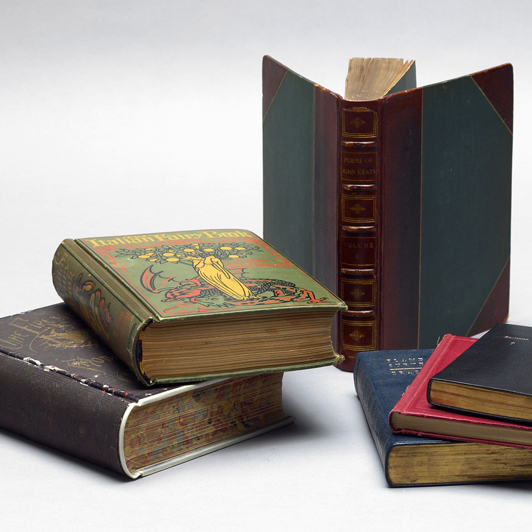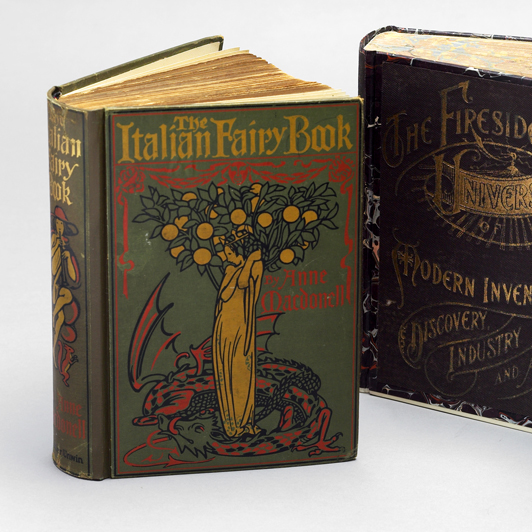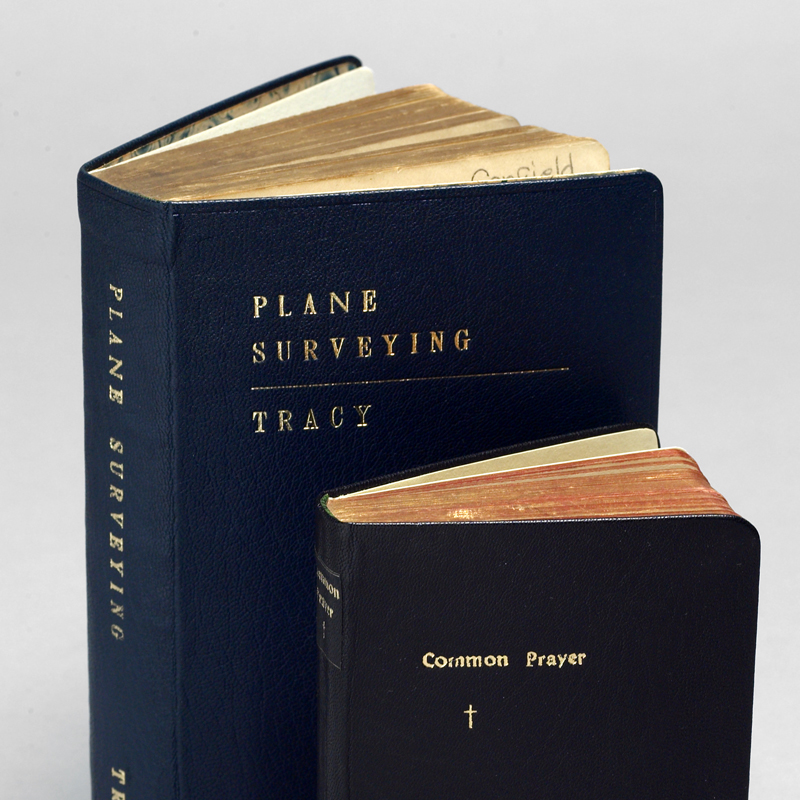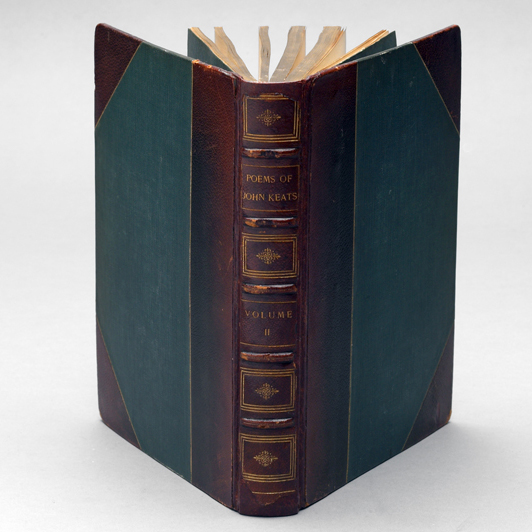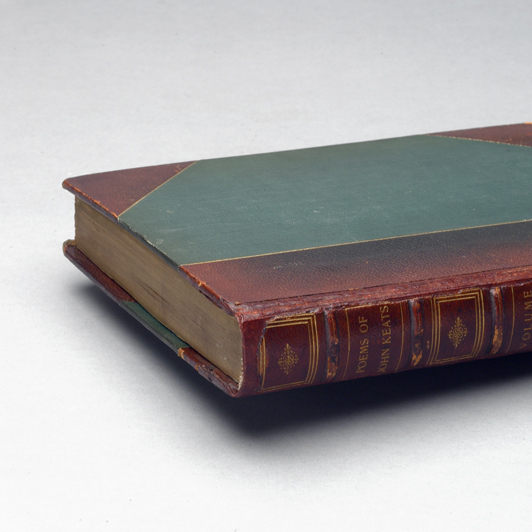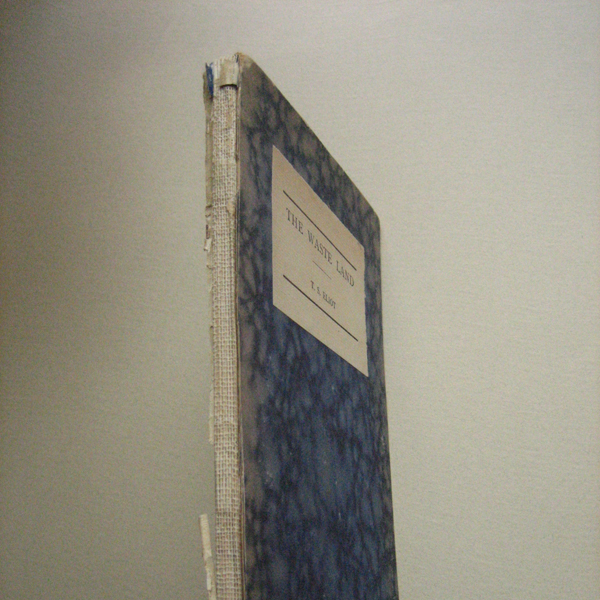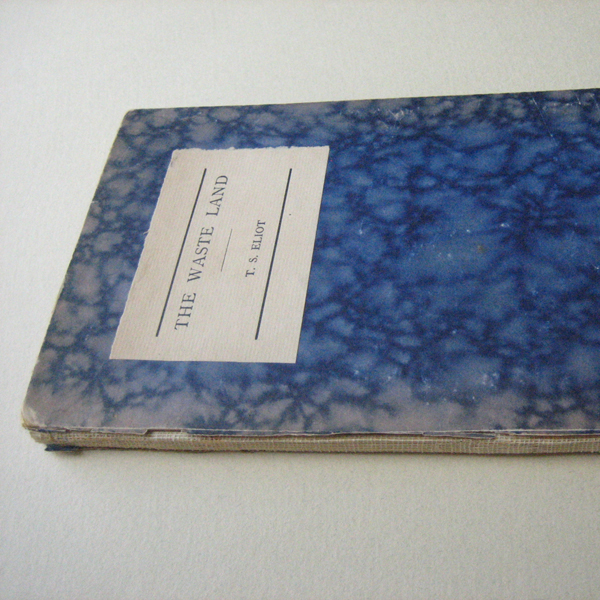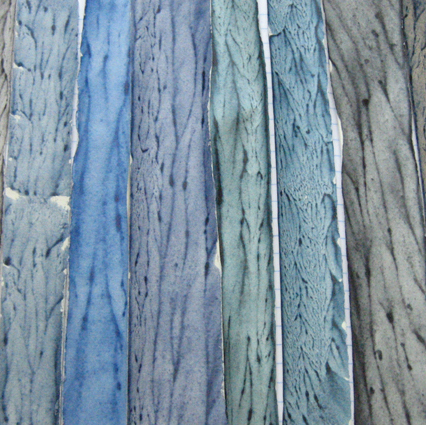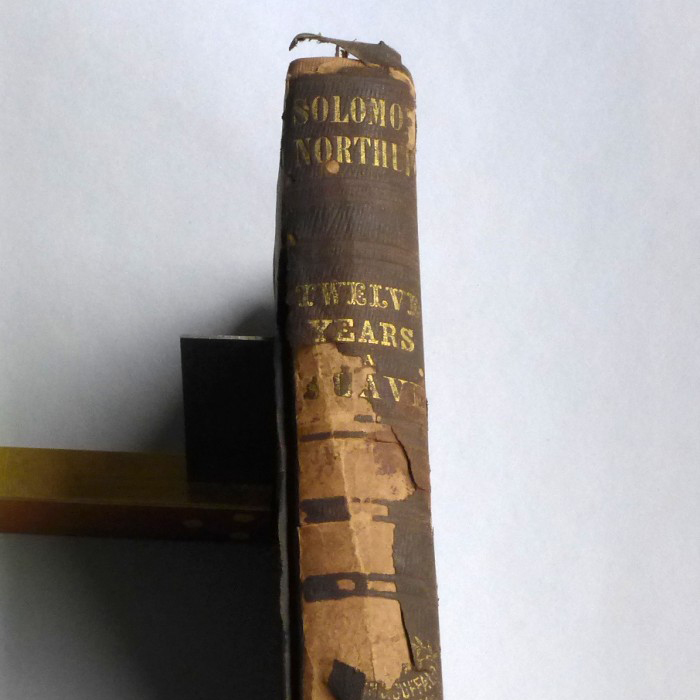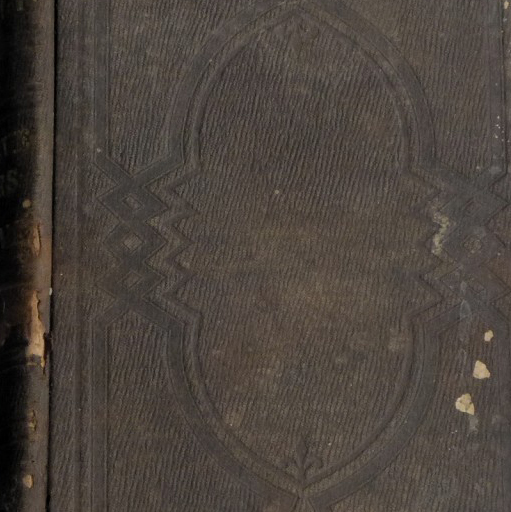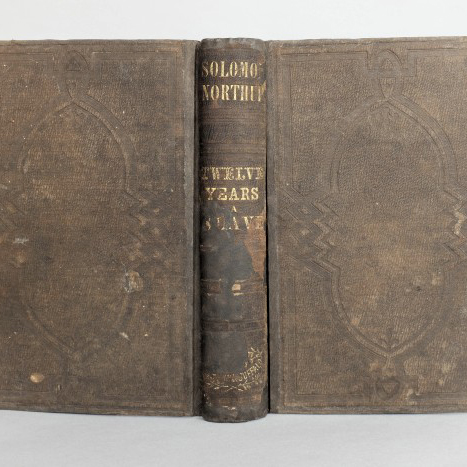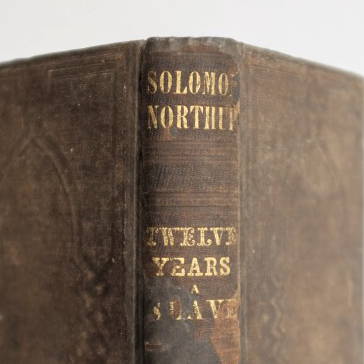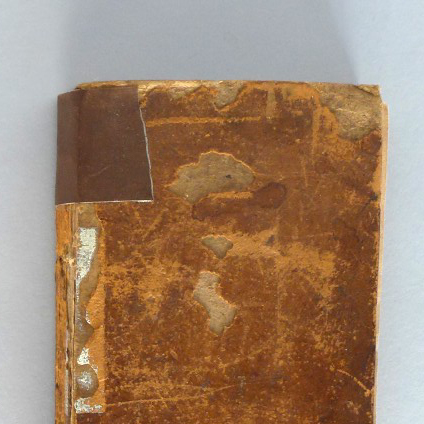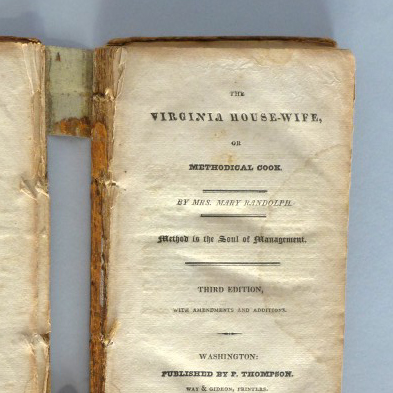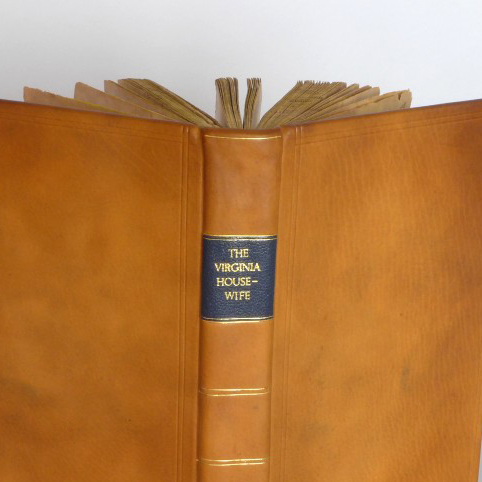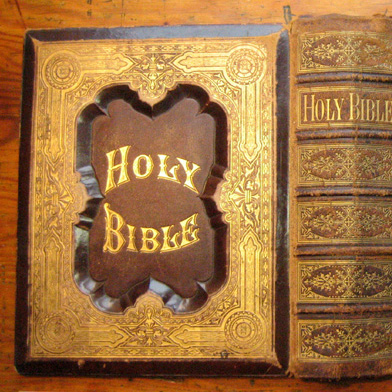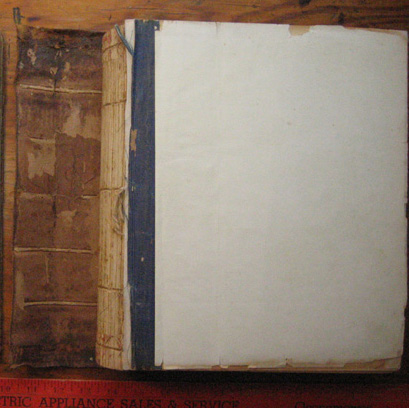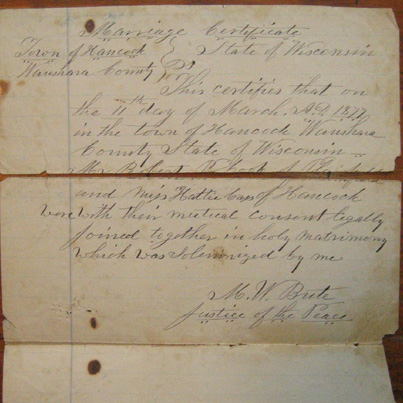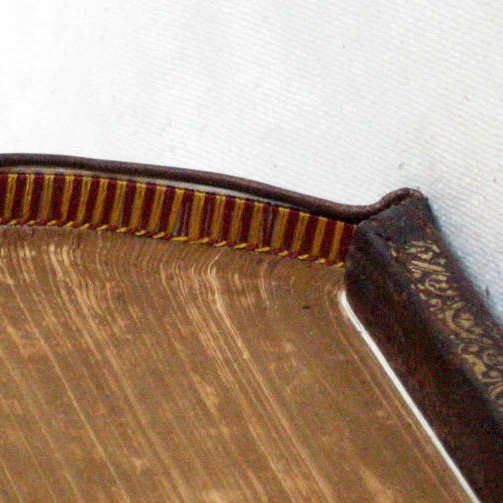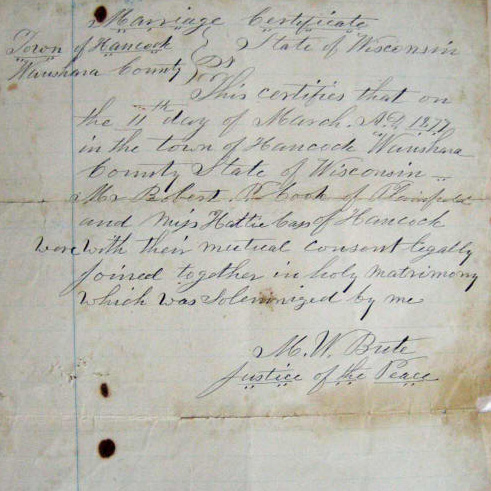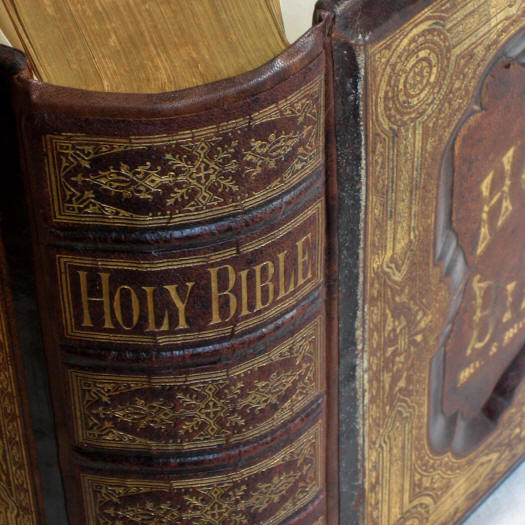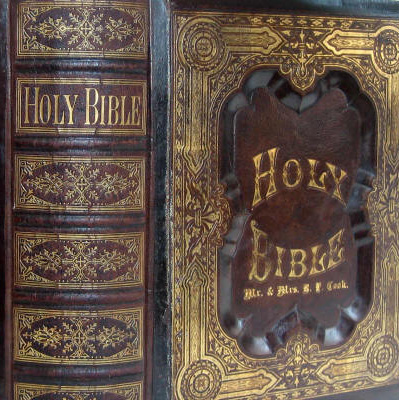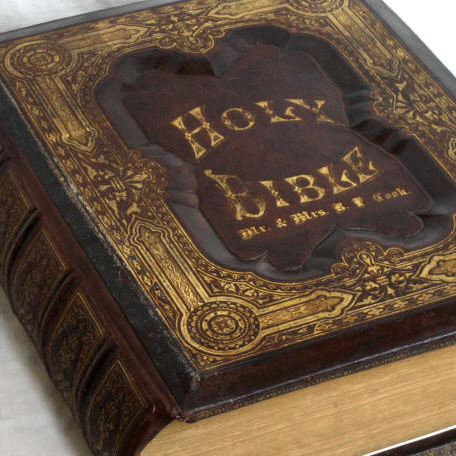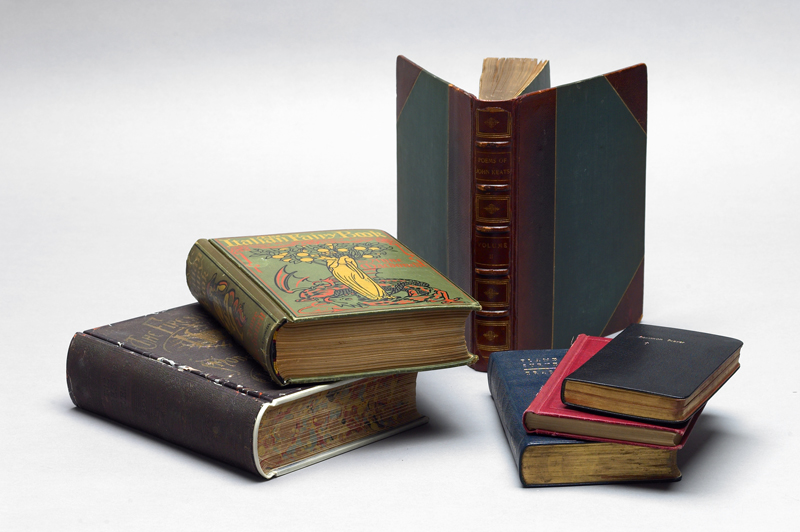
This shows several types of book repair. The dark brown book on the left has received a new case with a strip of vellum on the bottom. Vellum is an exceptionally hard-wearing material, though expensive, so a small strip of it where a book rests on a shelf can prevent abrasion to that area. The olive green book above it has received what is called “recasing”. New cloth was dyed to match the old in order to rejoin the cover boards to the textblock. The standing book with the leather spine was rebacked with Moriki, a Japanese paper. Sometimes the high cost of leather prohibits its use in book repair, and Moriki offers a strong, lightweight substitute. It can be dyed to match the original covering material.
Three types of repairs to books originally bound in cloth: Recasing with original boards, recasing with new boards, and rebacking with original boards attached. Based on whether the original boards are still attached to the textblock or not and the condition in which they find themselves, various treatment strategies are adopted or combined for each individual volume.
These books are very dear to my heart. The structure is referred to as Limp Leather, for they were originally made with very thin, flexible boards. The original leather on both had completely deteriorated, so I used brand new leather for the entirety of their covers. The leather for this type of binding is pared to a very thin measure to match the dainty boards, and new endsheets are added. Books such as these were often produced to be used as highly functioning books, despite their refined methods of production. The books pictured here, one a manual for surveyors and another a book of common Episcopalian prayer, were both heavily used in the field.
Three types of repairs to books originally bound in cloth: Recasing with original boards, recasing with new boards, and rebacking with original boards attached. Based on whether the original boards are still attached to the textblock or not and the condition in which they find themselves, various treatment strategies are adopted or combined for each individual volume.
Three types of repairs to books originally bound in cloth: Recasing with original boards, recasing with new boards, and rebacking with original boards attached. Based on whether the original boards are still attached to the textblock or not and the condition in which they find themselves, various treatment strategies are adopted or combined for each individual volume.
This is a first edition copy of The Waste Land by T. S. Eliot, published by Shakespeare and Company. The boards were fairly secure, and the paper condition was good, but the paper around the spine was missing. The owner asked me to replace the missing paper as best as possible.
This is a first edition copy of The Waste Land by T. S. Eliot, published by Shakespeare and Company. The boards were fairly secure, and the paper condition was good, but the paper around the spine was missing. The owner asked me to replace the missing paper as best as possible.
Some of the trial and error results of achieving a good color match.
The owner of this book was not convinced it could be repaired. Much of the book cloth on the spine was missing, though strangely, most of the gold titling on the spine was still there.
The boards were very weak, though the paper that the book was printed on was lightweight and in good condition.
The book was originally made well before the Industrial Revolution, so the materials were of good enough quality to support a very good outcome for the repair.
I was able to save all the original parts of the cloth on the spine, including the titling.
This book came into the shop with duct tape on its very old leather covers. Partly owing to the challenges in removing the effects of tape on old leather, the owner chose to have the book rebound in a style somewhat similar to what would have been originally used.
The paper was in good condition, though the sewing had broken in several places.
I rebound the book in hand-dyed calfskin, and made a leather title label.
This photo shows a bit of the dust on the front cover, and how the leather on the lower cover was abraded from being slid across a shelf (I would assume) over time.
You can see the inside of the spine leather in this image, and how the leather, possibly from sheep, was disintegrating. You can also see how the thin cloth hinge had frayed and torn, causing the heavy upper cover to detach from the textblock.
The paper had some light dirt and dust and two tears along the folds. There were also three burn marks in the same position along the three-fold.
Headbands of this era were often sewn around a strip of vellum. The original headband was as well, but it was quite shredded and very little was left. I simply mimicked the style and colors of the original.
A bit cleaner, with a bit of Crompton's heat set tissue over the tears, and a folder to protect it. It will be stored in the custom box with the Bible.
New leather was pared and dyed to match the color of the spine. The leather was slid under the original leather on the cover boards and the original spine was attached over the new leather. It was somewhat difficult because of the steep bevel on the cover boards. A light microcrystalline wax was applied overall to protect the original leather from further abrasion and to blend the new and old leathers. Light applications of Hewit's leather dyes were made to restore the covers to their original color.
The heavy coats of dirt and dust on the upper cover, painstakingly removed, had really given the book quite a pallor. But they are now gone and the book really shines.
The front cover required extensive cleaning and restoration of the tooling and leather. The book must have been stored lying on a shelf, open to dust. A custom fitted box was made to protect the book from dust and other environmental conditions.


